NASA’s Dawn spacecraft has acquired its latest and closest-yet snapshot of the mysterious dwarf planet world Ceres. These latest images, taken on Feb. 4, from a distance of about 90,000 miles (145,000 km) clearly show craters – including a couple with central peaks – and a clearer though still ambiguous view of that wild white spot that has so many of us scratching our heads as to its nature.
Get ready to scratch some more. The mystery spot has plenty of company.
Take a look at some still images I grabbed from the video which NASA made available today. In several of the photos, the white spot clearly looks like a depression, possibly an impact site. In others, it appears more like a rise or mountaintop. But perhaps the most amazing thing is that there appear to be not one but many white dabs and splashes on Ceres’ 590-mile-wide globe. I’ve toned the images to bring out more details:
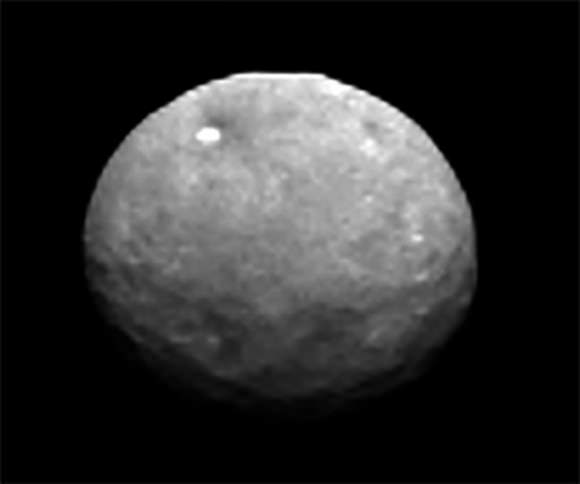
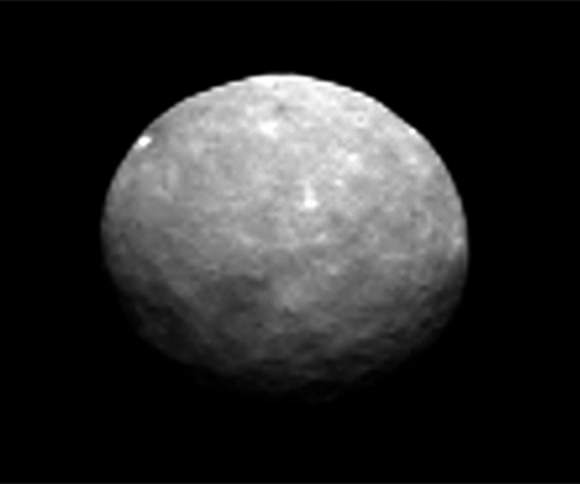
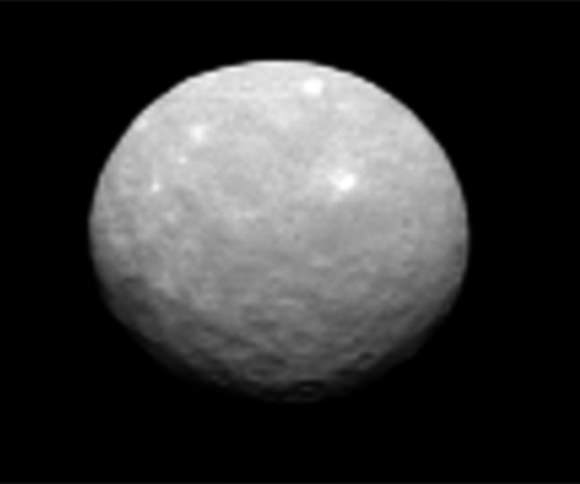
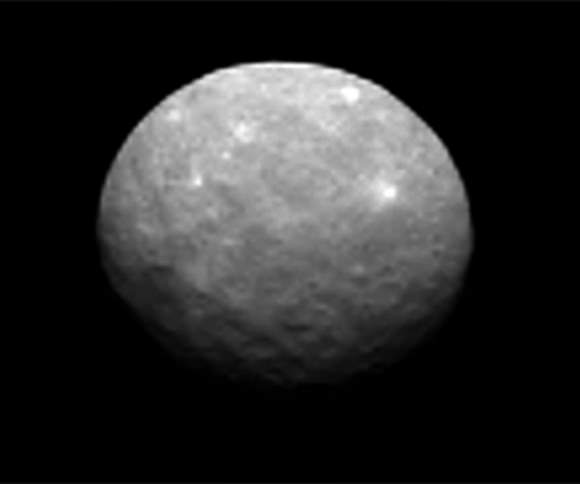
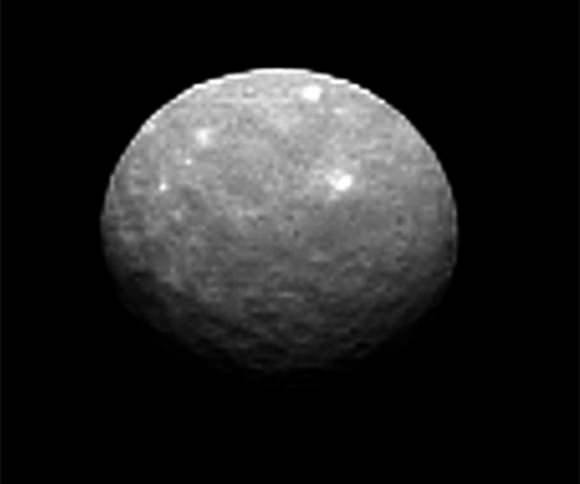
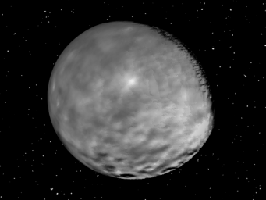
Now let’s take a look at an additional NASA animation of Ceres made using processed images. As the spot first rounds the limb it looks like a depression. But just before it disappears around the backside a pointed peak seems to appear. Intriguing, isn’t it?


Well Ceres looks extremely interesting! That area does look elevated.
Yes I noticed more white spots earlier but now their even more obvious and the “big white spot” Could be a crater with a mountain in its centre, Its possible the prominent white crater is a more recent impact and the white is below surface ice that has risen after the collision….thanks Bob for the update.
UFOsM,
You’re welcome. Only a month from real close-up photos that should resolve the issue.
DAWN arrives at Ceres March 6, 2015. So we’re getting close! What do you think? Will this mission answer more questions than it asks?
“All these regions are not really bright, but only seem so in comparison to their surroundings. As many bodies in the asteroid belt, Ceres is very dark and reflects only nine percent of the incident sunlight. The bright spots are brighter by approximately 50 percent – and thus as dark as an asphalt surface.”
From here:
http://www.mps.mpg.de/3902247/PM_2015_02_05_Dawn_Neue_Bilder_von_Ceres
No surface ice I’m afraid =)
au contraire .. http://science.nasa.gov/science-news/science-at-nasa/2014/22jan_ceres/
Let me rephrase this then: no obviously visible, large white patches of surface ice 😉
Manu,
I agree despite appearances they may have nothing to do with ice. I suspect impact at the least.
Aqua4U thanks for pointing that out hope Manu enjoyed it too 🙂 lol
Many spots on Ceres? Obviously it wasn’t vaccinated.
*ahem*
Rosetta, Dawn, New Horizons… this is all too much to take in!
It looks like a volcano to me. An extinct one I’m betting, but a volcano is what it looks like. That would be very interesting!
All the bright spots are on the upper hemisphere?
Is “North” on Ceres reasonably in the direction of all the norths of the planets?
Vesta’s is way over on its side pretty much – near RA = 305.8° ± 3.1°, Dec = 41.4° ± 1.5° ( http://www-ssc.igpp.ucla.edu/personnel/russell/papers/improved_measurement.pdf)
Ceres is dark, Vesta is much lighter, maybe the White Spot(s) is the result of Ceres being impacted by a small member of the Hirayama family of asteroids. The reverse appears to be the case with Vesta being covered with dark spots. Although there is no definite proof yet there is a smoking gun which indicates that the white spots are the result of impacts with Vesta like meteorites.
Roseland Observatory